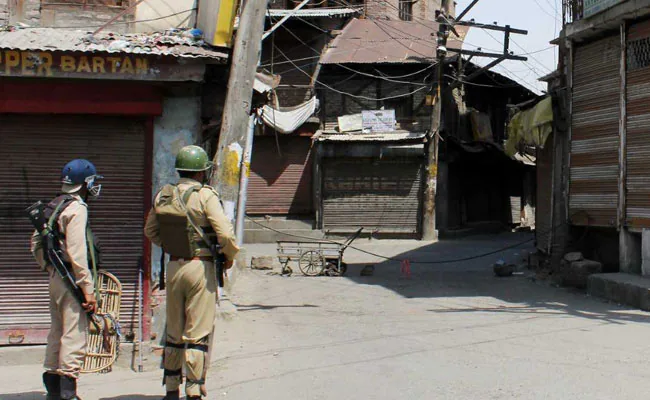A new study blames 9 million deaths a year for all types of blames pollution, with the death toll attributed to dirty air from cars, trucks and the industry rising 55% since 2000.
That increase is offset by fewer pollution deaths from primitive indoor stoves and water contaminated with human and animal waste, so overall pollution deaths in 2019 are about the same.
The United States is the only fully industrialized country in the top 10 countries with total pollution deaths, ranking 7th with 142,883 deaths in blamed pollution in 2019, sandwiched between Bangladesh and Ethiopia, according to a new study in the journal The Lancet Planetary Health. Tuesday’s pre-pandemic study is based on the Global Burden of Disease Database and the Institute for Health Metrics and Evaluation. India and China lead the world with pollution deaths of nearly 2.4 million and almost 2.2 million deaths a year, but the two countries also have the largest population.
When deaths are put at a per capita rate, the United States ranks 31st at 43.6 pollution deaths per 100,000. Chad and the Central African Republic rank among the highest rates of 300 pollution deaths per 100,000, more than half of them in tainted water, while Brunei, Qatar and Iceland have the lowest pollution death rates from 15 to 23. The global average is 117 pollution deaths per 100,000 people.
Cigarette smoking and second-hand smoke combined, according to the study, are the same number of people around the world as Pollution Kills.
“There are 9 million deaths,” said Philip Landrigan, director of the Global Public Health Program and Global Pollution Observatory at Boston College.
“The bad news is that it’s not decreasing,” Landrigan said. “We’re making gains in the easy stuff and the most difficult stuff we’re seeing, which is the ambient (outdoor industrial) air pollution and the chemical pollution, still going up.”
It doesn’t have to be this way, researchers said.
“They are preventable deaths. Every single one of them is a death that is unnecessary, ”said Dr. Lynn Goldman, dean of the George Washington University School of Public Health, who was part of the study. She said the calculations made sense and if anything. What is it that is attributed to pollution, that the real death toll is likely higher?
The certificates for these deaths don’t say pollution. They list heart disease, stroke, lung cancer, other lung problems and diabetes that are “tightly correlated” with many epidemiological studies, Landrigan said. Together with these are the actual causes of death, investigators look at the number of deaths caused by exposure to various factors, and then the complex exposure response calculations derived from large epidemiological studies based on studies of overweight people. . It’s the same way scientists say cigarettes cause cancer and heart disease deaths.
“That cannon of information constitutes causality,” Landrigan said. “That’s how we do it.”
Five outside experts in public health and air pollution, including Goldman, told The Associated Press that the mainstream scientific thought follows. Dr. Renee Salas, an emergency room doctor and Harvard professor who was part of the study, said, “The American Heart Association determined over a decade ago that exposure to (tiny pollution particles) like fossil fuels was created for causal.” heart disease and death. ”
“While people are focusing on decreasing their blood pressure and cholesterol, some of the most important indicators of air pollution are improving their heart health,” Salas said.
Three-quarters of the overall pollution fatalities came from air pollution and the overpowering part of “a combination of stationary sources like coal-fired power plants and steel mills on one hand and mobile sources like cars, trucks and buses. And that’s just a big global problem, ”said Landrigan, a public health physician. “And it’s getting worse as the world grows and cities grow.”
In New Delhi, India, air pollution peaks in the winter months and last year saw only two days when the air was considered polluted. It was the first time in four years that the city experienced a clean air day during the winter months.
South Asia reconfirms what is already known, but the increase in these deaths means that toxic emissions from vehicles and energy generation are increasing, said Anumita Roychowdhury, director of the advocacy group Center for Science and Technology Environment in New Delhi.
“This data is a reminder of what’s going wrong, but it’s also an opportunity to fix it,” Roychowdhury said.
Pollution deaths are soaring in the poorest areas, experts said.
“This problem is the worst in the world where populations are the most dense (eg Asia) and where financial and government resources are the most polluting problem to address. pollution, ”said Dan Greenbaum, president of The Health Effects Institute.
In 2000, industrial air pollution killed about 2.9 million people a year globally. By 2015 it was up to 4.2 million and in 2019 it was 4.5 million, the study said. Toss in household air pollution, mostly from inefficient primitive stoves, and air pollution killed 6.7 million people in 2019, the study found.
Lead Pollution – Some from lead additives It has been banned from gasoline in every country, including old paint, recycling batteries and other manufacturing – kills 900,000 people a year, while water pollution is responsible for 1.4 million deaths a year. Occupational health pollution adds another 870,000 deaths, the study said.
In the United States, about 20,000 people a year die from lead pollution-induced hypertension, heart disease and kidney disease, mostly occupational hazards, Landrigan said. Leads and asbestos are America’s biggest chemical occupational hazards, and they kill about 65,000 people a year from pollution, he said. The study said the number of air pollution deaths in the United States in 2019 was 60,229, far more than American deaths on the road, which hit a 16-year peak of nearly 43,000 last year.
Modern types of pollution are rising in most countries, especially developing ones, but fell from 2000 to 2019 in the United States, the European Union and Ethiopia. Ethiopia’s numbers are quite detailed and may be a reporting issue, said study co-author Richard Fuller, founder of Global Alliance on Health and Pollution and President’s Pure Earth, a non-profit that works on pollution clean-up programs in about a dozen countries.
The study authors came up with eight recommendations for reducing pollution deaths, highlighting the need for better monitoring, better reporting and better government systems in regulating industry and cars.
“We absolutely know how to solve each of those problems,” Fuller said. “What’s missing is political.”




